Local solutions: collaborations and information sharing to grow passion and facilitate community change
Dylan Taillie ·Towards the end of April and into the beginning of May, I took a trip up the East Coast to attend the 2018 Local Solutions: Eastern Climate Preparedness Conference in the city of Manchester, New Hampshire. The conference was one I had heard about somewhat serendipitously through the Bay Brief (a weekly newsletter produced by the Chesapeake Bay Program) and my mother around the same time. Funding support through the Town Creek Foundation was offered for locals who live on the Eastern Shore and could bring knowledge and passion about climate change related issues back to the Shore. I applied for and received the funding, and was able to plan out a trip to attend the conference with my mother as a carpooling partner.
The conference ran from Monday morning through Wednesday afternoon and included some interesting tracks such as the built environment, planning and process, communication, leadership & engagement and public health and green space. I was looking forward to a few specific sessions that would apply to my work at UMCES including ones on stakeholder engagement strategies and measuring success. However, what I was able to glean from sessions that were not necessarily applicable to my every day work was also incredibly interesting and important for my role as a member of the community in Dorchester County.
The first session I went to was about successful stakeholder engagement around climate change issues and the ways that barriers around climate change communication can be overcome. Examples were given of some success stories such as Climate Trivia and the use of virtual reality and visual stations that show the different options to mitigate climate change in San Fransisco (created by Look Ahead San Francisco).
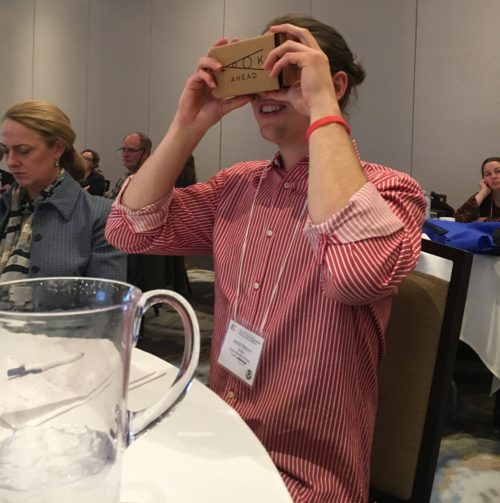
Monday night I made the short trip down to Boston and was able to enjoy my first ever baseball game at Fenway Park, a pretty awesome experience. I met up with a friend from studying abroad in Australia and caught up with him - and the Sox's won!
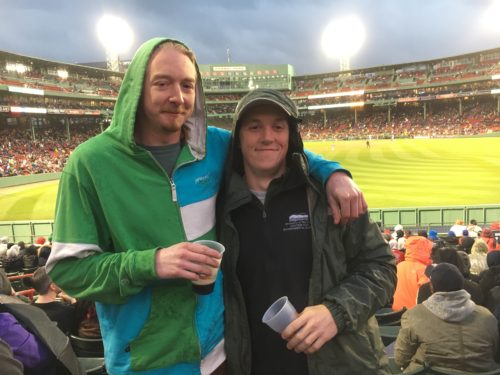
It should be noted that Monday evening I missed out on a showing of ‘High Tide in Dorchester’ – a film about sea-level rise, erosion and climate change in a low lying county on the Eastern Shore of Maryland. This is a film that I had seen before but I wanted to mention its inclusion as my mother informed me the discussion around the film was nice as some outsiders got insight into the way that people on the Shore are dealing with climate change issues.
On the second day the keynote speaker – Susanne Moser – talked about finding hope in the sometimes dark and depressing face of climate change and this spurred a great second day of discussions and learning. I attended sessions around green infrastructure implementation and had discussions about networking around climate change and collaborating with folks who are experiencing it in different ways. This full day of sessions and discussions was eye opening in terms of the way climate change effects other communities and how mountain towns are mitigating the effects of flooding and climate related issues.
After a full day of conference sessions on Tuesday it was nice to get outside and take a biking tour of the city of Manchester. We took a nice path along the Merrimack River and learned about some of the history of the old rust belt city. I was also able to meet some of the new group of Knauss Fellows at the networking dinner and head to a minor league baseball game for the New Hampshire Fisher Cats.
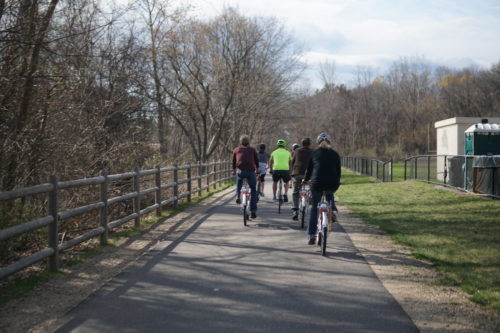
The final day of the conference was a great wrap up. I did a very useful activity that helped with measuring the success of a mitigation action and spoke with a few professionals about working together after the conference was finished. Some things that I really enjoyed about this opportunity are:
- The diversity of the participants. From students to municipality workers to government officials to university professors and everywhere in between.
- The spirit of creating networks within the conference and after it was finished in order to facilitate the sharing of information and the successful continuation of the passion that often builds at a conference centered around one central issue like this one.
- The ability to spend some time with my dear mother
Finally, heading back from the conference with my mom I was able to hike to the top of Mt. Monadnock, a 3,000 foot mountain that held some snow at the top even in the 80 degree weather.
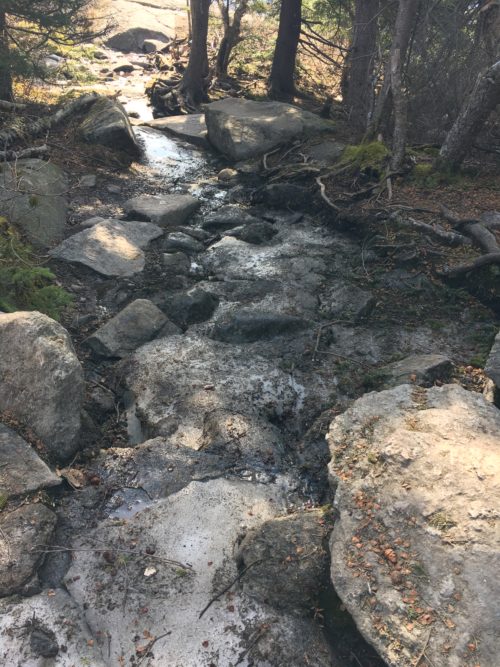
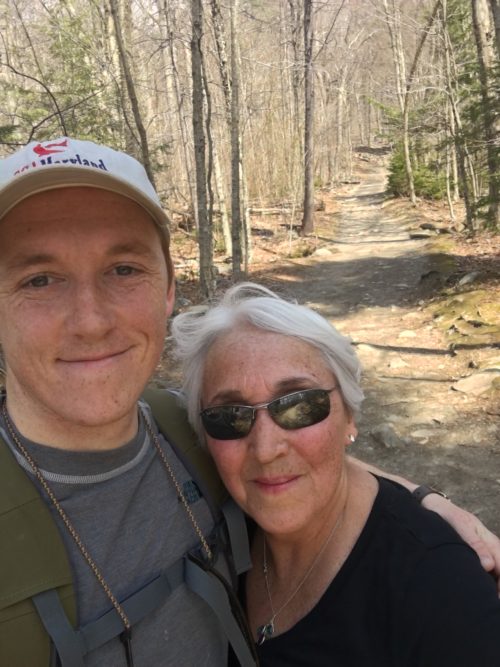
Thanks for reading!
Dylan
About the author
Dylan Taillie

Dylan is a Science Communicator with IAN. He has experience in various areas of visual information, science communication and technical analyses. Strengths in data management, environmental assessment and stakeholder engagement. He has worked with IAN in various positions since 2016 and enjoys fishing and hiking.

